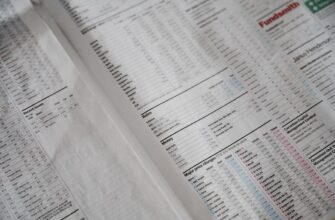- Introduction to Range Trading XRP on Binance
- How to Identify a Trading Range for XRP
- Setting Up Your Binance Account for XRP Trading
- Step-by-Step Range Trading Strategy for XRP on Binance
- Risk Management Essentials for XRP Range Trading
- Common Range Trading Mistakes to Avoid
- Frequently Asked Questions (FAQ)
- What makes XRP ideal for range trading?
- How long do XRP ranges typically last?
- Can I automate XRP range trading on Binance?
- What indicators work best with range trading?
- Is range trading profitable during crypto bull markets?
Introduction to Range Trading XRP on Binance
Range trading is a strategic approach where traders capitalize on an asset’s price oscillations between established support and resistance levels. XRP (Ripple) is exceptionally well-suited for this method due to its consistent volatility patterns and high liquidity on Binance—one of the world’s largest crypto exchanges. This manual provides a comprehensive guide to mastering XRP range trading on Binance, combining technical analysis with practical execution steps to help you profit from predictable price movements.
How to Identify a Trading Range for XRP
Accurate range identification is the foundation of successful trading. Follow these steps to spot XRP’s key levels:
- Support and Resistance Analysis: Identify horizontal price zones where XRP repeatedly bounces (support) or faces rejection (resistance) using Binance’s charting tools. Historical data from the past 2-4 weeks often reveals clear boundaries.
- Bollinger Bands: Apply this indicator to visualize volatility. A narrowing band width suggests a consolidating range—ideal for range trading setups.
- Relative Strength Index (RSI): Use RSI (14-period) to confirm range extremes. Readings above 70 indicate overbought conditions (sell near resistance), while below 30 signal oversold (buy near support).
Setting Up Your Binance Account for XRP Trading
Prepare your trading environment efficiently:
- Account Creation: Sign up at Binance.com, complete email verification, and enable two-factor authentication (2FA) for security.
- Verification: Submit KYC documents (ID, proof of address) to unlock higher withdrawal limits and full trading features.
- Funding: Deposit USD, EUR, or USDT via bank transfer or card. Convert to USDT (the most liquid XRP pair) in the Spot Wallet.
Step-by-Step Range Trading Strategy for XRP on Binance
Execute trades systematically using this workflow:
- Step 1: Chart Analysis – Open the XRP/USDT chart on Binance. Switch to 4-hour or daily timeframe for reliable ranges. Mark support/resistance lines.
- Step 2: Entry Orders – Place limit buy orders 1-2% above identified support and limit sell orders 1-2% below resistance to account for slippage.
- Step 3: Stop-Loss Placement – Set stop-loss orders 3-5% below support (for buys) or above resistance (for sells) to limit downside risk.
- Step 4: Take-Profit Targets – Aim for 2:1 risk-reward ratios. Exit 70-80% of position at resistance (for longs) or support (for shorts), letting the remainder ride with a trailing stop.
- Step 5: Trade Management – Adjust ranges weekly based on new price action. Avoid trading during high-impact news events (e.g., SEC rulings).
Risk Management Essentials for XRP Range Trading
Protect your capital with these non-negotiable rules:
- Position Sizing: Never risk more than 1-2% of your total capital per trade. For a $10,000 account, maximum loss per trade = $100-$200.
- Stop-Loss Discipline: Always use stop-loss orders. Emotional exits often amplify losses.
- Volatility Checks: Reduce position size if XRP’s average true range (ATR) increases by 50%+ versus the prior week.
Common Range Trading Mistakes to Avoid
Steer clear of these pitfalls:
- Forcing Trades in Trending Markets: If XRP breaks decisively above/below a range (+3% closing candle), pause trading until new consolidation forms.
- Overleveraging: Avoid futures/leverage in range trading—spot markets offer better risk control.
- Ignoring Fees: Binance’s 0.1% spot fee per trade erodes profits in tight ranges. Factor this into profit targets.
Frequently Asked Questions (FAQ)
What makes XRP ideal for range trading?
XRP exhibits strong mean-reversion tendencies due to its active use in cross-border payments, creating reliable support/resistance levels from recurring buy/sell pressure zones.
How long do XRP ranges typically last?
Ranges persist from several days to weeks. Monitor volume—declining volume often prolongs consolidation, while spikes may signal breakouts.
Can I automate XRP range trading on Binance?
Yes! Use Binance’s “Take Profit/Stop Loss” OCO (One-Cancels-Other) orders to automate entries/exits within your predefined range.
What indicators work best with range trading?
Combine Bollinger Bands (for volatility) with RSI or Stochastic Oscillator (for overbought/oversold signals) for high-probability setups.
Is range trading profitable during crypto bull markets?
It works best in sideways markets. During strong trends, breakout strategies outperform. Always adapt to market conditions.








